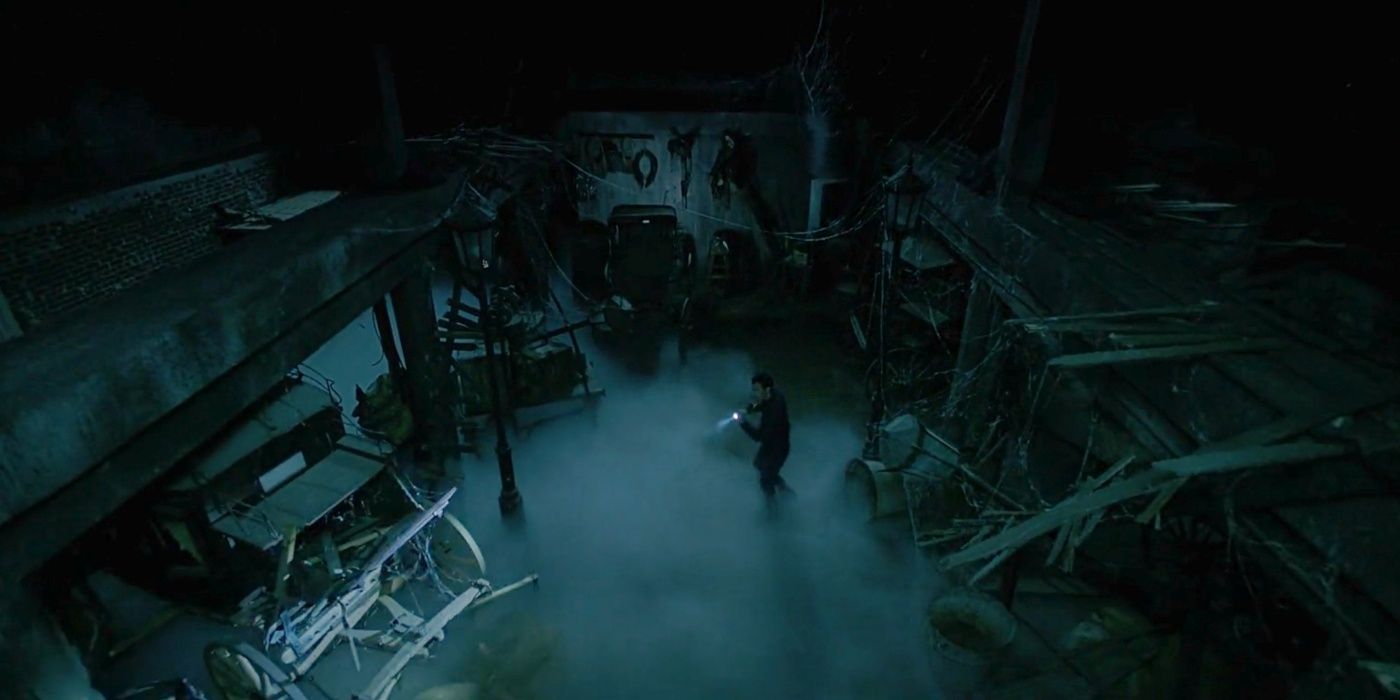Warning: This article contains spoilers for Malignant.
James Wan’s Malignant takes the audience to a creepy subterranean city beneath Seattle, prompting curious viewers to wonder if this underground world really exists. This unconventional horror thriller follows Annabelle Wallis’ Madison, who is seeing visions of a mysterious figure named Gabriel murdering people and she must discover her link to him. Wan’s Malignant has proved somewhat divisive in critical circles, though many find its third act reveal of Gabriel’s true nature to be both shocking and delightful in almost equal measure.
Another standout element of Malignant are the scenes set in the Seattle Underground, where the character of Serena May (Jean Louisa Kelly) – later revealed to be Gabriel’s birth mother – is introduced giving a guided tour of the underground city. It’s an undeniably eerie locale, so naturally, Wan stages a couple of the story’s most effective sequences there.
It’s become one of the most discussed elements of Malignant and actually ties into the key themes of the story. For those wondering, the Seattle Underground is a real place and has quite a fascinating history, and it isn’t often a horror movie designed to be a campy cult film takes viewers to a place of such historical significance. The original Seattle was built in the 1850s at sea level but due to frequent rainstorms and high tides, the city faced an egregious amount of flooding. Following the Great Seattle Fire of 1889, the city was rebuilt a couple of stories higher, with buildings constructed of brick and stone instead of wood. While businesses operated for a time with both the above-ground and below-ground functioning, an outbreak of the bubonic plague caused the underground to be shut down for good in 1907.

In recent times the Seattle Underground has become a tourist attraction, which – despite Malignant‘s mixed reviews – will likely only increase in popularity thanks to Wan’s latest horror opus. The symbolic nature of the setting wasn’t lost on the director either and it’s the perfect metaphor for Gabriel’s own feelings of abandonment, as well as the secret buried within Madison. The movie reveals Gabriel is a parasitic twin who was surgically removed from Madison when she was young, but since they share the same brain, a part of him lay dormant behind the surface for decades.
The overarching theme of the story is about a buried past resurfacing, so in this case, the Seattle Underground couldn’t have been a more perfect setting. Malignant‘s use of this historic location is closely linked to the aforementioned themes and further lends to James Wan’s unique voice in the horror genre.




